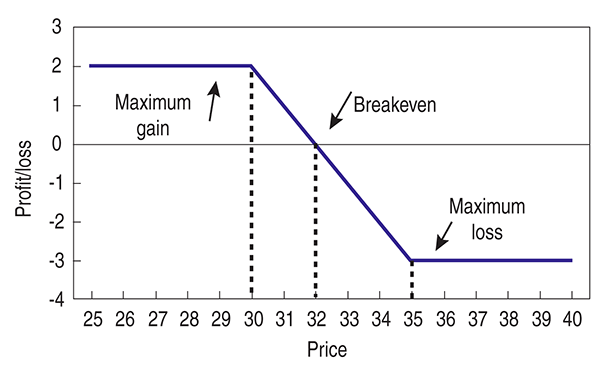 Explore Your Options
Explore Your OptionsQ&A
 Explore Your Options
Explore Your OptionsGot a question about options? Ask Price Headley, who was inducted into the Traders’ Hall of Game in 2007 and is the founder of BigTrends.com, which provides investors with real-time stock and option strategies and investment education. To submit a question, post it to our website Message-Boardsor price.headley@bigtrends.com Answers will be posted at the message-boards, and selected questions will appear in future issues of S&C.
ABOUT CREDIT SPREADS
How does a credit spread work?
There are several types of spreads, but they all work similarly. Option spreads can be used to take a bearish, bullish, or neutral position. For example, letís look at a credit spread, which is what a spread is called when it generates a net inflow of cash into your account.
There are several types of spreads, but they all work similarly. Option spreads can be used to take a bearish, bullish, or neutral position. In this instance, we are bearish; according to our calculations, we think the price of XYZ stock will go down. We decide to sell a September 30 call for a price of $3. Since we think that XYZ will go down in price, we assume that nobody will want to exercise our short call against us — that is, make us sell them XYZ shares at $30 — since they can be bought in the open market for less than $30.
However, to protect ourselves in case we are wrong (in case XYZ shares increase in value), we buy a September 35 call at a price of $1. That way, if XYZ shares go to $40, we can get someone else to sell their shares to us at $35, and we can cap our risk at the $5 difference. Our real maximum risk is the $5 difference minus the credit collected. Take a look at our position in Figure 1.

FIGURE 1: OPTION POSITION
At expiration, if XYZ is below $30 a share, we get to keep the $200 credit because nobody will buy our XYZ at $30, not when they can buy it at the market price for less. If XYZ shares are above $35 at expiration, then somebody would call our shares at $30. Of course, we would also exercise our option to buy shares at $35. We would lose the $5 differential, but we had already made $2. Therefore, our loss is limited to a net of -$3. (See Figure 2.)

FIGURE 2: PROFIT/LOSS VS. PRICE
That said, it is rarely the case that you experience an exercise of an option. It is easier and more cost-effective to buy or sell the option as it changes value in relation to the stock. I get concerned about an early exercise when there is no time value left in the option initially sold. At that point, Iím buying that option back and looking to sell another option with more time premium to capture elsewhere.